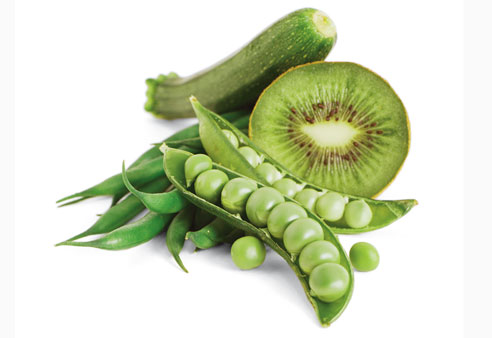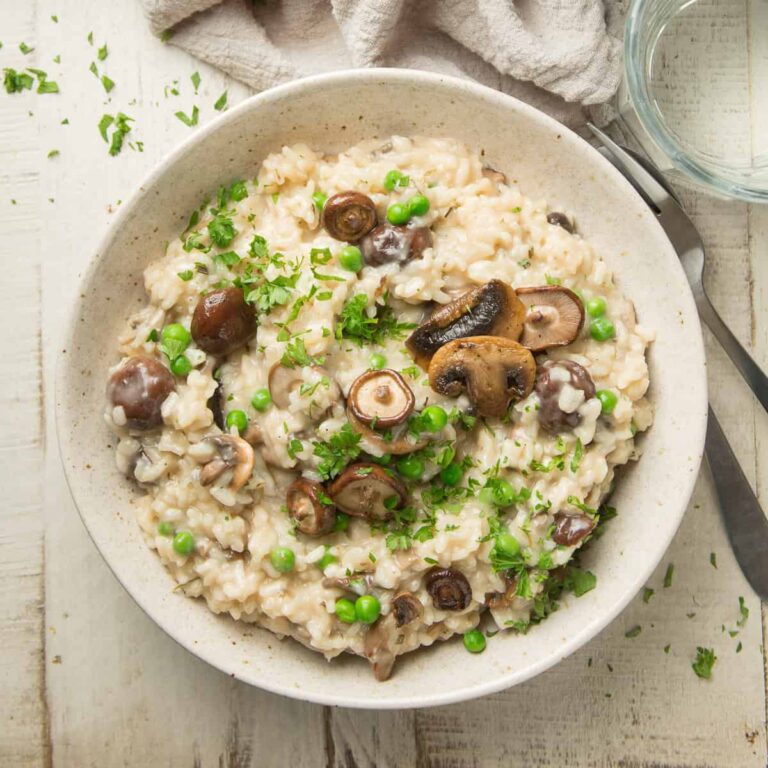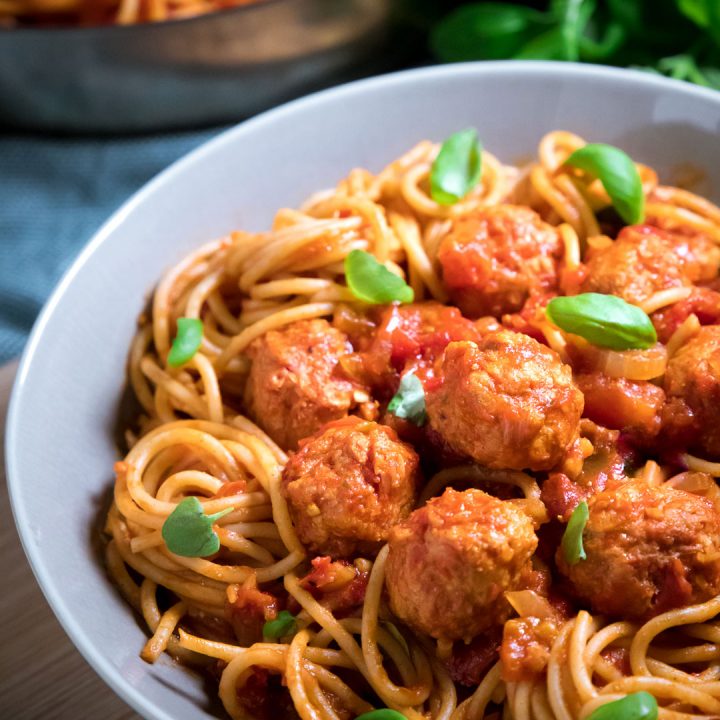Unraveling the Meat Myth: Embracing Health Through Plant-Based Nutrition
In a society where the notion of meat being essential for our well-being prevails, it’s time to break free from this misconception and pave the way toward a healthier lifestyle.
Dispelling the Outdated Notion of Animal-Derived Protein Superiority
The belief that animal-derived protein holds superiority over plant-based protein has long been rooted in the assumption that animal sources provide a “complete” set of essential amino acids. This perception implies that animal protein offers adequate quantities of all nine essential amino acids necessary for human health. In contrast, plant-based protein sources are often perceived to have lower proportions of specific essential amino acids.
However, it’s crucial to recognize that this line of thinking is outdated. Modern nutritional science reveals that all plant foods inherently contain a comprehensive spectrum of essential amino acids. By embracing a diverse range of whole plant foods throughout the day, or even over the span of a few days, while meeting calorie requirements, individuals can effortlessly fulfill their protein needs without the need for meticulous consideration of specific food pairings.
Furthermore, a wealth of evidence underscores the superiority of obtaining protein from plant sources, highlighting its positive impact on overall health and the promotion of graceful aging.
Debunking the Myth: Red Meat and Iron Requirements
Iron deficiency stands as the most prevalent nutrient deficiency worldwide, and it’s important to note that this issue extends beyond the confines of a plant-based diet. In plant-based foods, iron exists in the “non-haem” form, differing from the “haem” iron present in meat. Remarkably, individuals adhering to vegetarian or vegan diets generally consume iron quantities comparable to, or slightly higher than, those following omnivorous diets. Despite this parity or even superiority in iron intake, individuals on plant-based diets often exhibit lower iron stores, primarily due to the more efficient absorption of haem iron from animal sources.
Although this might raise concerns, the lower iron stores associated with plant-based diets can, in fact, yield advantages in terms of chronic disease prevention. However, it’s important to acknowledge that this dynamic may contribute to a modest yet noteworthy elevation in the risk of anemia, as indicated by certain studies focusing on individuals who exclude meat from their diets.
Revolutionizing Nutritional Paradigms: The Power of Plant-Based Eating
Shifting our perspective from the outdated “meat is a must” ideology to a more enlightened approach of embracing plant-based nutrition can yield remarkable health benefits. The narrative that animal-derived protein is the sole pathway to nutritional adequacy is a fallacy that hinders our potential for vibrant well-being.
Embracing Plant-Based Protein for Longevity and Vitality
As the evidence unravels, it becomes evident that plant-based protein sources possess inherent advantages that promote not only well-being but also longevity. By prioritizing a plant-centric dietary framework, individuals can relish in the following benefits:
- Enhanced Nutrient Profile: Plant-based protein sources come bundled with a rich assortment of vitamins, minerals, and antioxidants that synergistically contribute to optimal health and vitality.
- Reduced Disease Risk: Numerous studies highlight the correlation between plant-based diets and a decreased risk of chronic diseases such as heart disease, diabetes, and certain cancers.
- Gut Health Advancement: The fibrous nature of plant-based foods fosters a healthy gut microbiome, supporting digestion, immunity, and overall wellness.
- Weight Management: Adopting a plant-focused eating pattern often leads to better weight management, owing to the lower caloric density of many plant-based foods.
- Ethical and Environmental Considerations: Beyond personal health, embracing plant-based nutrition aligns with ethical and environmental values by mitigating the environmental impact associated with conventional animal agriculture.
The Future of Nourishment: Embracing a Plant-Centric Lifestyle
In essence, the paradigm that once positioned meat as the pinnacle of nutrition is now debunked by modern scientific insights. The journey towards optimal health and vitality lies in shifting towards a plant-based dietary approach, one that harnesses the boundless benefits of diverse plant foods and unlocks the potential for a life brimming with energy and wellness.
In conclusion, the notion that meat is an irreplaceable nutritional cornerstone is an outdated myth that impedes our ability to thrive. By recognizing the inherent power of plant-based protein sources and dispelling misconceptions, we can pave the way for a future marked by vitality, well-being, and longevity. It’s time to unshackle ourselves from the confines of the meat myth and embrace the bountiful offerings of plant-based nutrition.
Unleashing the Power of Iron Absorption: A Path to Enhanced Health
In the realm of nutrition, the uncharted territory of iron absorption has emerged as a pivotal factor influencing our overall well-being. Contrary to conventional beliefs, the unchecked assimilation of haem iron from meat has been unmasked as a potential catalyst for oxidative stress, leading to a heightened vulnerability to an array of chronic ailments. Cardiovascular disease, cancer, and type 2 diabetes loom on the horizon as potential consequences of this unregulated haem iron influx. Thus, advocating for meat consumption as a panacea for combating iron deficiency reveals its inherent shortcomings.
Navigating Iron Absorption: Unveiling the Complex Landscape
The process of iron absorption is a nuanced interplay influenced by multifaceted factors. The composition of a meal, the physiological demand for iron, and the individual’s existing iron status collectively shape the intricate tapestry of iron assimilation within the body.
The Veiled Obstacles: Impediments to Non-Haem Iron Absorption
The story of iron absorption extends beyond the confines of haem iron, branching into the realm of non-haem iron. This facet is characterized by its mercurial nature, fluctuating in response to various elements. Notably, certain compounds prevalent in plant-based foods wield the power to either facilitate or hinder the absorption of iron.
- Phytates: Allies and Adversaries in Iron Absorption The presence of phytates, abundant in wholegrains and legumes, introduces a paradoxical twist to iron absorption. While revered for their nutritional value, phytates possess the ability to impede the assimilation of iron from plant sources.
- Polyphenols: Deciphering Their Dual Role The spectrum of iron absorption intricacies widens with the inclusion of polyphenols, omnipresent in tea and coffee. These compounds, renowned for their antioxidant prowess, simultaneously act as barriers to efficient iron assimilation from plant-derived foods.
Catalysts of Absorption: Forging a Path to Optimal Iron Utilization
The path to fortifying iron absorption doesn’t lay solely in the identification of obstructions. Instead, it beckons us to uncover synergistic mechanisms that amplify our body’s capacity to absorb iron efficiently. Vital protagonists in this narrative include vitamin C, citric acid, and other organic acids.
- Vitamin C: Elevating Iron Uptake to New Heights The marriage between iron-rich foods and vitamin C-rich counterparts begets a profound transformation in the realm of iron absorption. This dynamic duo, comprising wholegrains, legumes, nuts, seeds, and a medley of fruits and vegetables, orchestrates an intricate dance that propels iron assimilation to unprecedented heights.
Beyond Conventional Wisdom: The Quest for Iron Balance
As the intricate web of iron absorption unravels, it becomes increasingly evident that the solution to iron deficiency transcends simplistic paradigms. The tenets of a balanced diet extend their embrace to encompass a harmonious coalition of diverse nutrients, meticulously orchestrated to enhance iron utilization.
The Roadmap to Iron Harmony: Pioneering Optimal Health Through Synergy
In the quest for amplified iron absorption, a roadmap emerges that beckons individuals of all life stages to embark on a journey towards optimal health:
- Cultivate Culinary Symphony: Curate meals that weave together iron-rich components, such as wholegrains, legumes, nuts, and seeds, with the vibrant palette of vitamin C-drenched fruits and vegetables. This symphony of flavors not only tantalizes the taste buds but also primes the body for enhanced iron assimilation.
- Embrace Nutritional Alchemy: Unearth the potential of vitamin C-laden ingredients to catalyze iron absorption. Citrus fruits, bell peppers, strawberries, and an array of leafy greens stand as alchemical agents that transmute ordinary meals into fortresses of iron utilization.
- Elevate Iron Consciousness: Elevate awareness about the intricate dance of iron absorption within the body. By deciphering the nuances of nutritional synergies, individuals gain the power to harness the full potential of iron-rich plant foods.
Unveiling the Iron Paradox: A Journey of Revelation
In a realm where nutritional dogma often dictates the narrative, the enigmatic journey of iron absorption stands as a testament to the complexity that underpins optimal health. The revelation that unchecked haem iron absorption from meat might sow the seeds of chronic diseases serves as a clarion call to redefine our dietary landscapes. As we embrace the symphony of nutrients and unravel the alchemical secrets of iron absorption, a tapestry of robust well-being unfurls, paving the way to a life resonating with vitality, resilience, and longevity.
UNCOVERING THE LINK BETWEEN RED MEAT AND CANCER: SEPARATING FACT FROM FICTION
In the intricate realm of dietary choices and health outcomes, the question lingers like an unrelenting shadow: Do red meat and processed meat truly serve as catalysts for cancer? The resounding answer, substantiated by pivotal research, is an unequivocal “yes.” In 2015, a seismic revelation echoed through the corridors of health science as the World Health Organization (WHO) unequivocally declared processed meat a major contributor to colorectal cancer. A weighty designation awaited it: Group 1 carcinogen, a classification reserved for agents that bear the undeniable stigma of causing cancer. Delving deeper, the association between seemingly innocuous indulgences, like a solitary hot dog or a handful of bacon strips, and an 18 percent surge in colorectal cancer risk sent shockwaves through medical discourse. Resonating harmoniously with this proclamation, the World Cancer Research Fund (WCRF) and the American Institute for Cancer Research (AIRC) endorsed this revelation, cementing its veracity.
Beyond the Surface: Unraveling the Culinary Culprits
The narrative doesn’t halt at colorectal cancer’s doorstep; instead, it winds through a labyrinth of research unveiling insidious links between processed and red meat consumption and an array of malignancies. The implications radiate across a spectrum encompassing breast, stomach, pancreatic, prostate, and bladder cancers, stitching a disconcerting tapestry that spotlights the formidable role of meat consumption in fueling cancer progression. These profound revelations have led international cancer guidelines to cast a shadow of caution, advocating for the curbing of processed and red meat consumption to mitigate the peril of cancer development.
Grappling with the Global Burden: Meat’s Ominous Imprint
The veil of statistics pulls back to reveal a grim portrait: According to estimates by the Global Burden of Disease, a pioneering academic research entity, diets rich in processed meat exact a staggering toll, attributing approximately 34,000 annual cancer deaths worldwide to this dietary choice alone. The looming specter of red meat paints an even graver picture, potentially bearing the culpability for a staggering 50,000 cancer-related fatalities annually across the globe.
Unlocking the Mechanisms: Unveiling the Marital Dance of Meat and Cancer
To fully grasp the intricate symphony of events underpinning the meat-cancer nexus, one must traverse the terrain of biochemical intricacies and physiological interplay. The active agents within meat, be it processed or red, conspire to forge an environment ripe for cancer’s insidious onset.
- Culprit in the Shadows: Processed Meat’s Sinister Composition Processed meat’s allure masks a dark underbelly defined by nitrates and nitrites, potent preservatives that transform within the body into carcinogenic compounds. These agents, coupled with the grilling or smoking process, pave a path fraught with danger.
- Red Meat’s Multifaceted Arsenal: Heme Iron and More Red meat unveils a distinct arsenal of cancer-promoting agents, including heme iron, a double-edged sword that fosters oxidative stress while nurturing cancerous growth. Coupled with the interactions of mutagenic compounds and the creation of carcinogens during cooking, the symphony of danger amplifies.
Empowerment through Awareness: Charting a Safer Culinary Voyage
As the truth unfurls and the realm of meat-induced cancer is illuminated, a beacon of empowerment emerges, guiding individuals towards a safer culinary haven:
- Balanced Diet Symphony: Curate a dietary melody that orchestrates a harmonious blend of plant-based nutrients, whole grains, and a vibrant palette of fruits and vegetables. Reducing reliance on processed and red meats ushers in a vibrant ensemble of health.
- The Protein Palette: Diversify Protein Sources Elevate protein sources to encompass legumes, nuts, seeds, and lean poultry, weaving a tapestry of sustenance that mitigates the risks posed by processed and red meats.
- Culinary Mastery: Mindful Cooking Techniques Navigate the realm of culinary creation with prudence, embracing cooking methods that minimize carcinogen formation while accentuating the nourishing aspects of food.
Shaping a Healthier Tomorrow: The Measured Shift Away from Meat
The clarion call resounds with unwavering conviction: The interplay between meat consumption and cancer is undeniable. In the delicate balance of health preservation, the conscious redirection of dietary choices away from processed and red meats emerges as a formidable guardian against cancer’s relentless advances. As we stride forth armed with knowledge and fortified by healthier culinary preferences, the pursuit of vibrant well-being becomes an attainable reality, echoing through the annals of time as a testament to the resolute power of informed choices.
Unlocking the Health Secrets: The Pioneering Path of Plant-Based Protein
The unequivocal verdict is in: “OBTAINING PROTEIN FROM PLANT SOURCES IS ASSOCIATED WITH BETTER HEALTH OUTCOMES AND PROMOTES HEALTHY AGEING.” This resounding proclamation ushers in a new era of nutritional wisdom, where the merits of plant-derived protein stand as a beacon of vitality. However, as the dietary landscape unfurls, a question lingers: Does chicken offer a healthier alternative? Let us delve into the nuanced realm of protein choices, debunk myths, and shed light on optimal dietary pathways.
Chicken’s Place in the Spectrum: A Comparative Glimpse
The notion of substituting red meat with chicken is not unfounded, carrying a modicum of health benefits. Yet, it’s imperative to recognize that while this shift may yield marginal gains, there exist superior choices to fuel our dietary journey. The age-old advice advocating for the consumption of ‘white’ meat over ‘red’ meat as a panacea for cholesterol woes has undergone scrutiny. A comprehensive study unraveling the impact of diverse protein sources on blood cholesterol levels paints a revealing picture.
Unraveling the Protein Paradigm: An In-depth Exploration
Embarking on a rigorous scientific expedition, researchers orchestrated a study that intricately examined the cholesterol response to varying protein sources. Participants embarked on a dietary odyssey, traversing paths of red meat, white meat, and plant-based protein, each with high or low saturated fat content. Four-week stints on each diet, interspersed with washout periods, unveiled the complex dance of cholesterol modulation.
A Revelation Beyond Color: Cholesterol’s Enigmatic Response
As the results unfurled their insights, a paradigm-shifting revelation emerged: The impact on blood cholesterol levels remained remarkably similar between red and white meat consumption. Intriguingly, this phenomenon stood independent of saturated fat intake, challenging the traditional wisdom surrounding cholesterol modulation. Notably, the plant-based protein diet emerged as a transformative force, conspicuously devoid of any elevation in blood cholesterol levels.
Grasping the Mirage: The Organically Reared Meat Myth
In the realm of dietary discourse, the narrative of organic, grass-fed meat emerges as a beacon of health. The belief that health concerns stemming from meat consumption can be alleviated by embracing organically reared animals, thriving on forage-based diets, reverberates within health-conscious circles.
Beyond the Surface: Nutrient Nuances in Organic Meat
Indeed, there exists a discernible divergence in the nutrient composition of organic and non-organic meat, with a spotlight on the fatty acid landscape. Organic meat takes center stage with heightened levels of polyunsaturated omega-3 fatty acids, renowned for their health-promoting attributes. However, the crux of the matter resides in a critical revelation: The consumption of organic meat does not conclusively herald superior health outcomes compared to its non-organic counterpart.
Unveiling the Underlying Truth: A Matter of Protein and Saturated Fat
Ultimately, as the discourse unfurls, a resounding truth crystallizes: The crux of negative health impacts is rooted in the intrinsic nature of animal protein and saturated fat. It’s a revelation that transcends the boundary between organic and non-organic meat, asserting its presence with unwavering consistency.
Navigating the Path to Optimal Health: Informed Choices Beckon
Armed with insights that transcend the conventional narrative, a voyage towards optimal health emerges as a compelling directive:
- Plant-Forward Prowess: Embrace the resplendent tapestry of plant-based protein sources, nurturing a symphony of health and vitality within. Legumes, nuts, seeds, and an array of vibrant produce stand as stalwart allies in this journey.
- Mindful Meat Choices: For those who choose to include meat, mindfulness reigns supreme. Opt for lean cuts, steering clear of excessive saturated fat, and harmonize your plate with an ensemble of nutrient-rich sides.
- Organic Considerations: While the allure of organic meat persists, let awareness guide your choices. Understand that the essence of health transcends labels, emanating from a holistic dietary approach.
A Path Paved with Knowledge: Embracing Vibrant Well-being
The canvas of nutrition paints a vivid tapestry, where informed choices act as the vibrant strokes that shape our well-being. As we tread the path, mindful of protein origins and saturated fat content, we navigate the terrain with grace and clarity. The journey unfolds, leading us to a destination where vitality, resilience, and holistic health converge, harmonizing the symphony of life with a crescendo of well-informed choices.
EMBRACING THE TRUTH ABOUT PLANT-BASED MEAT ALTERNATIVES: UNVEILING THE HEALTH IMPACTS
The allure of plant-based meat alternatives (PBMA) beckons as a beacon of environmental and ethical responsibility, forging a path towards a kinder world for animals and our planet. However, the query that lingers in the collective consciousness pertains to their impact on human health. While the scales of data may tilt lightly towards their perceived health benefits, a more profound exploration unravels the intricate tapestry of these alternatives.
Beyond Meat: Navigating the Health Terrain
Amidst the resounding echoes of ecological harmony, the realm of human health emerges as an uncharted territory. The narrative thus far remains enveloped in a shroud of uncertainty, bearing witness to a dearth of comprehensive data illuminating the health repercussions of PBMA consumption.
The Health Mirage: Unveiling the Facets of ‘Healthiness’
The premise that PBMA potentially stand as ‘healthier’ choices stems from their profile that often mirrors a reduction in saturated fat content, a conspicuous absence of cholesterol, and a retreat from inflammatory animal protein. This commendable trajectory extends further, with select alternatives boasting a commendable infusion of dietary fiber.
Cracking the Culinary Code: Unraveling the Processing Paradox
Yet, as the veneer is peeled back, the shadowy underbelly of the PBMA spectrum comes into focus. The classification of ‘ultra-processed’ casts a veil of concern, with many alternatives harboring elevated sodium levels and an assembly of processed constituents. When juxtaposed against the vibrant mosaic of whole plant foods such as lentils and beans, the contrasts are stark, underscoring the nutritional chasm.
Intricacies of Impact: A Matter of Diet Composition
The symphony of health repercussions unravels a chorus of caution, highlighting that a diet swathed in processed and refined plant-based offerings can yield health outcomes as detrimental, if not more so, than a diet anchored in animal-derived sources. Herein lies a paradox that merits contemplation – the purported ‘healthier’ choice potentially sliding into the quagmire of health detriment.
Venturing into the Unknown: Unraveling Novel Components
The evolution of PBMA unfurls novel frontiers, thrusting previously uncharted ingredients into the culinary arena. The advent of haem iron from soy nodules epitomizes this daring exploration, carrying with it an aura of ambiguity concerning its health implications.
The Spectrum of Variation: Navigating Nutritional Diversity
Amidst this panorama of uncertainty, a glimmer of hope emerges in the form of variation. Not all PBMA are created equal, with a continuum that spans the expanse from tradition to innovation. Time-honored stalwarts like tofu, tempeh, and seitan find their place, resonating as virtuous additions to a wholesome plant-based regimen.
The Luminary of Longevity: Embracing Plant-Centric Paradigms
Amidst this labyrinthine discourse, the thread of longevity weaves a compelling narrative. Cultures that boast remarkable health outcomes and enduring lifespans invariably gravitate towards a dietary canvas predominantly adorned with plant-based hues. The narrative begins to shift, subtly yet resolutely, aligning with a healthier existence for both individuals and the planet.
Towards a Wholesome Horizon: Illuminating the Path Forward
As the pendulum of dietary exploration swings, a tapestry of revelations unfurls. While the verity of PBMA’s health impact remains veiled, the trajectory of well-being is etched with a plant-based quill. The pursuit of health is harmoniously interwoven with the rhythms of our planet, forging a symphony of wellness that resonates across generations. Amidst the myths that cling to meat consumption, a glimmer of hope emerges – the collective awakening to a truth that beckons us towards a vibrant, compassionate, and healthier way of life.





